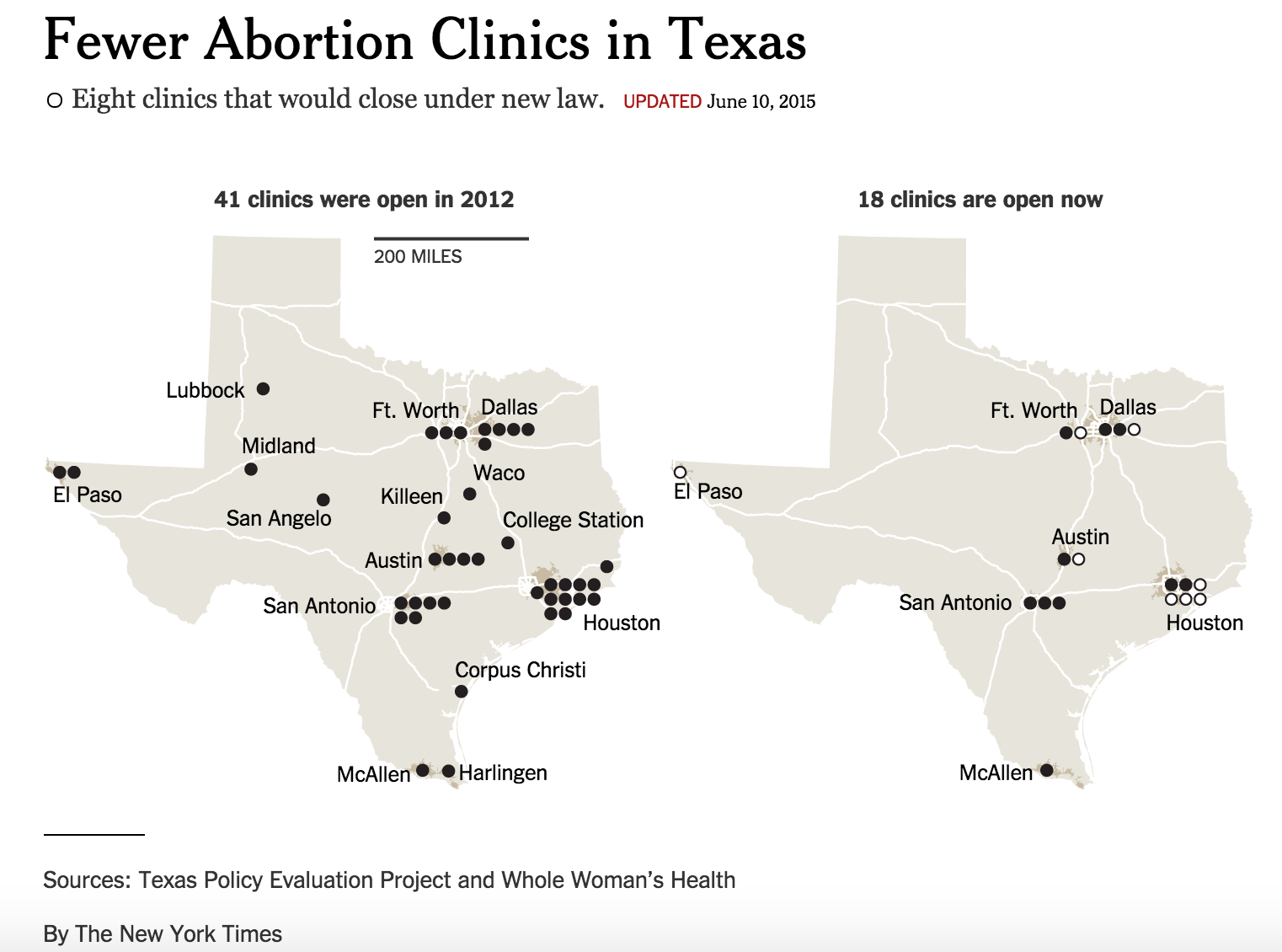Ruth Bader Ginsburg Addressed a Myth About Abortion

By:
On Monday, the U.S. Supreme Court ruled that a 2013 Texas law restricting women's right to an abortion was unconstitutional. In her opinion on the case, Justice Ruth Bader Ginsburg argued that the law perpetuated a common myth about the danger of abortion procedures for women.
 AP/Krista Kennell - apimages.com
AP/Krista Kennell - apimages.com
"Many medical procedures, including childbirth, are far more dangerous to patients, yet are not subject to ambulatory surgical-center or hospital admitting-privileges requirements," Ginsburg wrote.
There's research in support of Ginsburg's claim. A 2012 study published in the journal Obstetrics & Gynecology found that women are 10 times as likely to die after childbirth than after an abortion. Data from 1998 to 2005 revealed that "one woman died in childbirth for every 11,000 babies born," The Washington Post reports. "Less than one in 167,000 women died of abortion complications."
 Stocksy/Kelly Knox - stocksy.com
Stocksy/Kelly Knox - stocksy.com
If you consider the fact that the abortion rate in Texas dropped 13 percent after the state's new restrictions went into effect — in part because some women were traveling to other states to carry out the procedure and in part because the restrictive law pressured woman to forego abortions, according to a 2014 study from the Texas Policy Evaluation Project — then you can see how the law may have actually had the opposite effect on women's health. Those who ultimately had the child were at greater risk of dying from birth-related complications.
To understand how this myth functioned in the context of Texas' HB2 law, look at what the law required.
Doctors were required to have admitting privileges at a local hospital and their facilities had to meet standards previously reserved for surgical centers. The effect? More than half of the state's 41 clinics closed in response to the increased regulations.
 The New York Times - nytimes.com
The New York Times - nytimes.com
Lawmakers defended the abortion law by presenting it as a safeguard for women's health. These procedures are risky, they said, and in order to protect women from untrained doctors and unsafe facilities, they had to bolster regulations for providers. But Ginsburg wasn't buying it.
Not only do states have the ability to inspect abortion clinics, but Texas' government could also enhance protections by adding regulations that wouldn't obstruct reproductive health services as the law did, Ginsburg said. What's more, '[w]hen a State severely limits access to safe and legal procedures, women in desperate circumstances may resort to unlicensed rogue practitioners, [for lack of a better option], at great risk to their health and safety," she wrote.
